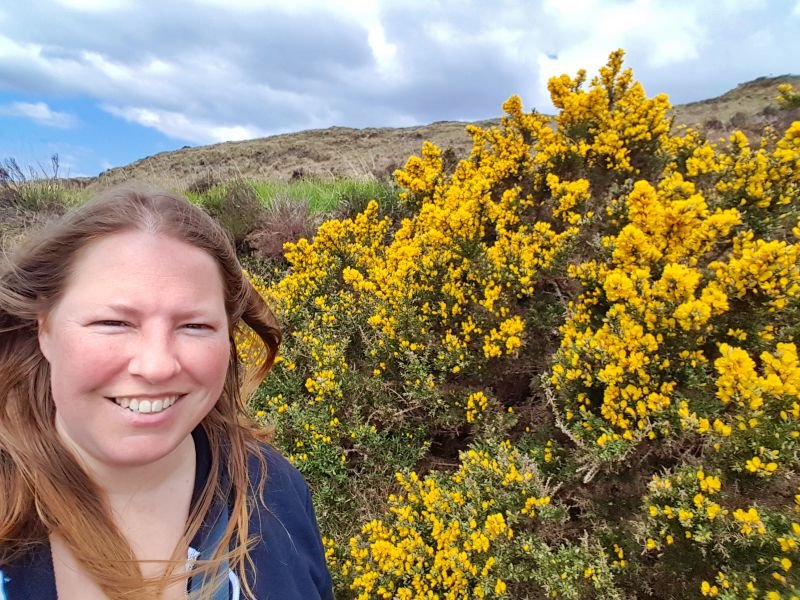
Me with the generally much-hated Gorse
Oh, Connemara! You are not my favourite part of Ireland (sorry). You are a little too rough for me, but you do have something magical! And strangely enough, I like you most when the weather is shite ;) More about that later!
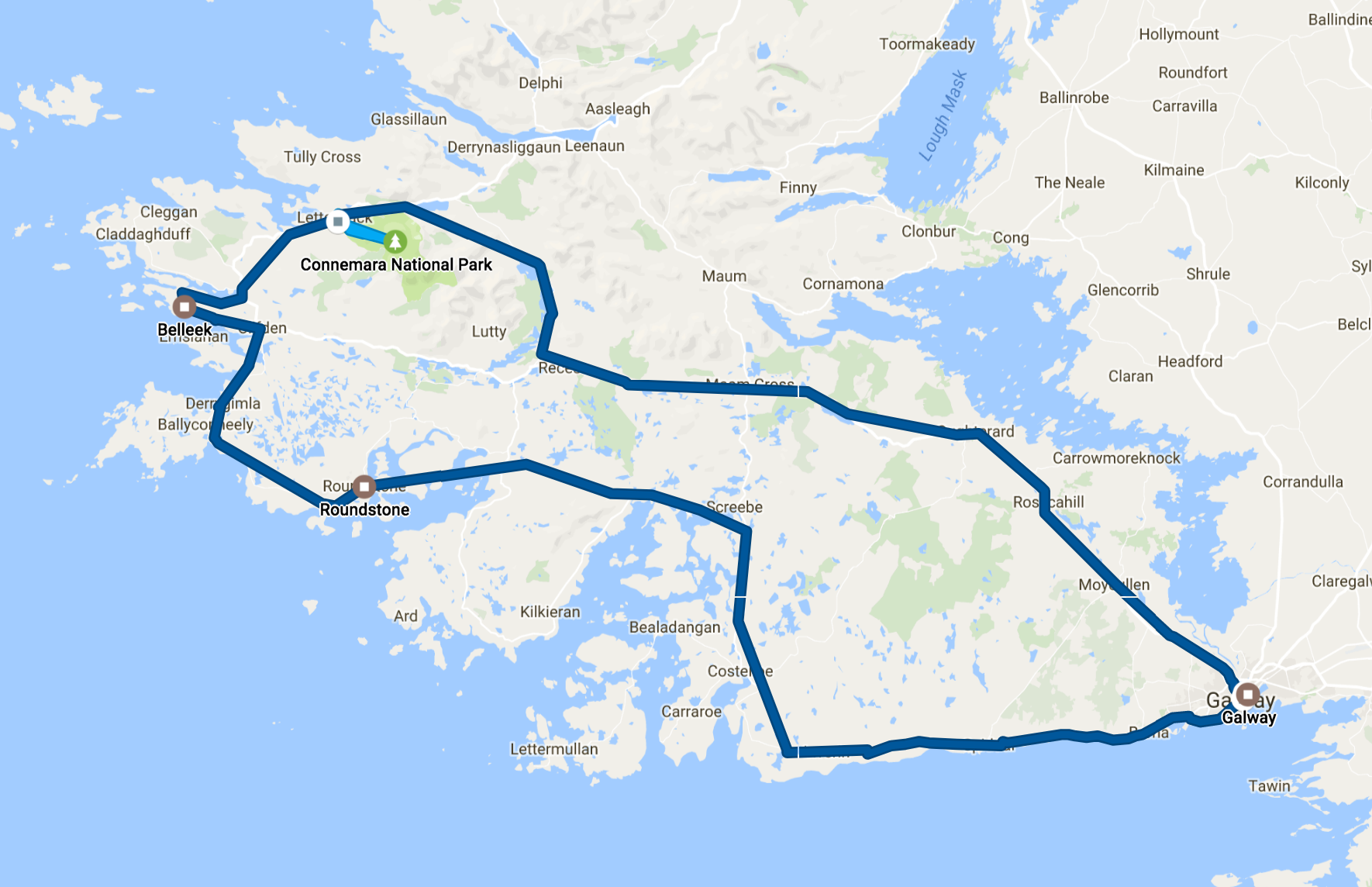
My route that day, starting point Galway
Connemara is located in the mid-western part of Ireland. And if you are ever in Galway, you should definitely explore Connemara a little. Not because it is the most gorgeous region of Ireland, but because (which is my personal opinion) it is pretty authentic and tells (and shows) the historical story of Ireland very well.
Historical intermezzo
I never took the time to tell you about Irish history. This is because I am not too familiar with it. But the things that I heard I found very interesting. I always considered the UK and Ireland to be long-term friends. But this isn't really the case. Large parts of Irish history are defined by English oppression and Irish resistance and it was only 1922 when the Irish finally became independent.
Have you ever wondered why they speak English in Ireland and not Irish (some would call it Gaelic)? The official language of Ireland is Irish (that is why signs in the country always start with the jibberish and then English). But only a few areas in the western part of Ireland speak it on a daily basis. Connemara holds a few of those areas! Most of the Irish people only know 1 sentence: "An bhfuil cead agam dul amach go dtí an leithreas?", a sentence you were forced to use in school when you had to ask permission to go to the bathroom.
The disappearance of Irish could be blamed on the English. In the past, Irish Catholic landowners were forced to move to the west where the terrains were rather inhospitable. Fertile areas in the east were given to the Brits. This way the Irish language moved to the west. During the oppression, the Irish language wasn't banned, but it was discouraged. All communication with the government was supposed to be in English and after a while, it happened to be that English became the language of the rich and Irish of the poor. But a large blow to the language came between 1845 and 1849, due to the Irish Potato Famine. This hit the western regions the hardest. Many Irish people died or emigrated, hurting the Irish language even more.
More info about the Irish language
End of intermezzo
So, Connemara is a region that wasn't as much influenced by the British as the rest of the country. It is empty and you will find a lot of remote houses here. With of course the many sheep.
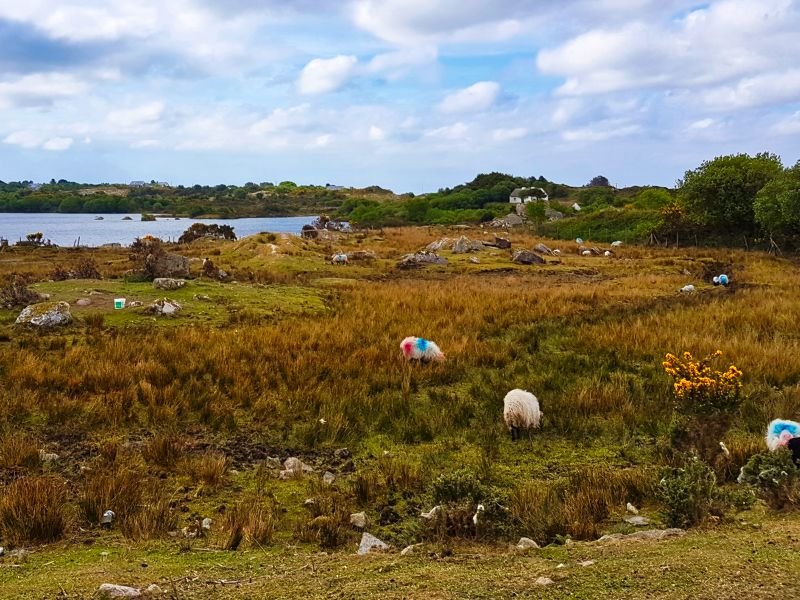
Our first stop was going to be in Roundstone. It is an artistic town build situated next to a harbour. It has many colourful houses, but it was pretty dead when we were there.
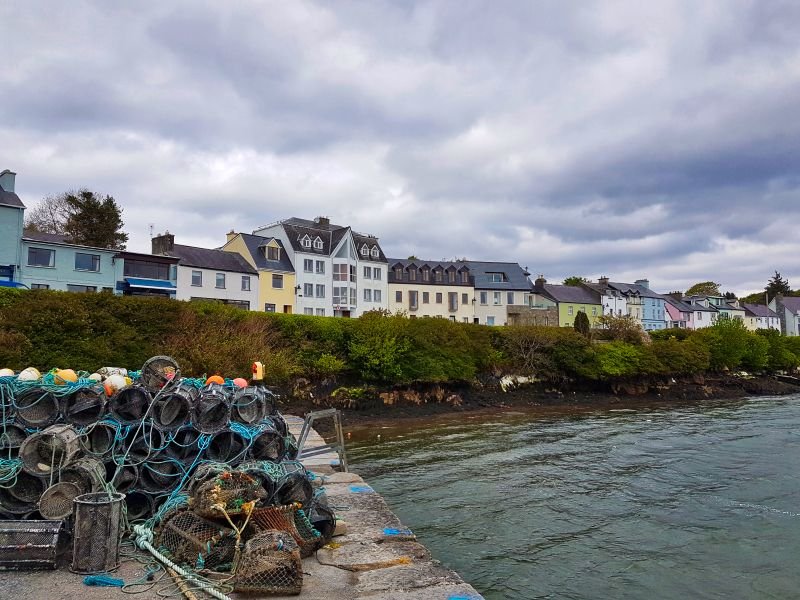
Roundstone town
Again, towns aren't what I like most on these trips. It is the ever-changing scenery that makes a road trip special for me. The next 50 minutes were filled with beaches, sheep, cliffs, rocks and grass.
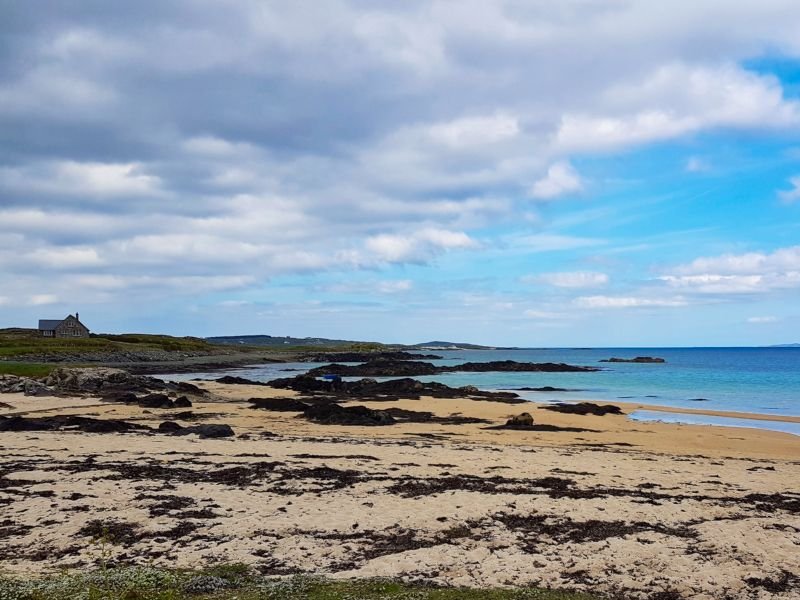
Coral Strand, Derrygimla
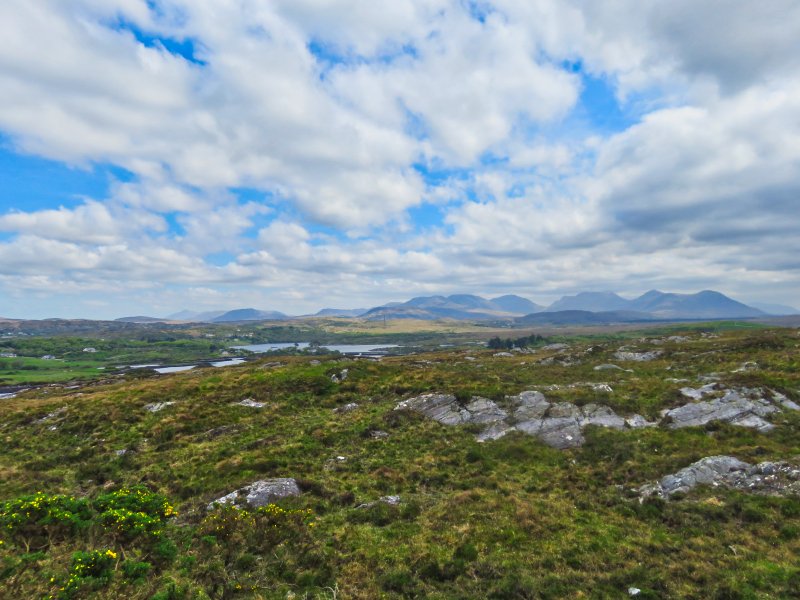
On our way to Clifden
At some point, we joined Sky Road. And that road is a highlight of Connemara. I found it weird to see fields of grass just suddenly stop in the distance where the cliffs were. "How often do sheep fall into the water?", I wondered.

Sky Road. Viewpoint for the Wild Atlantic Way
Connemara National Park & Diamond Hill
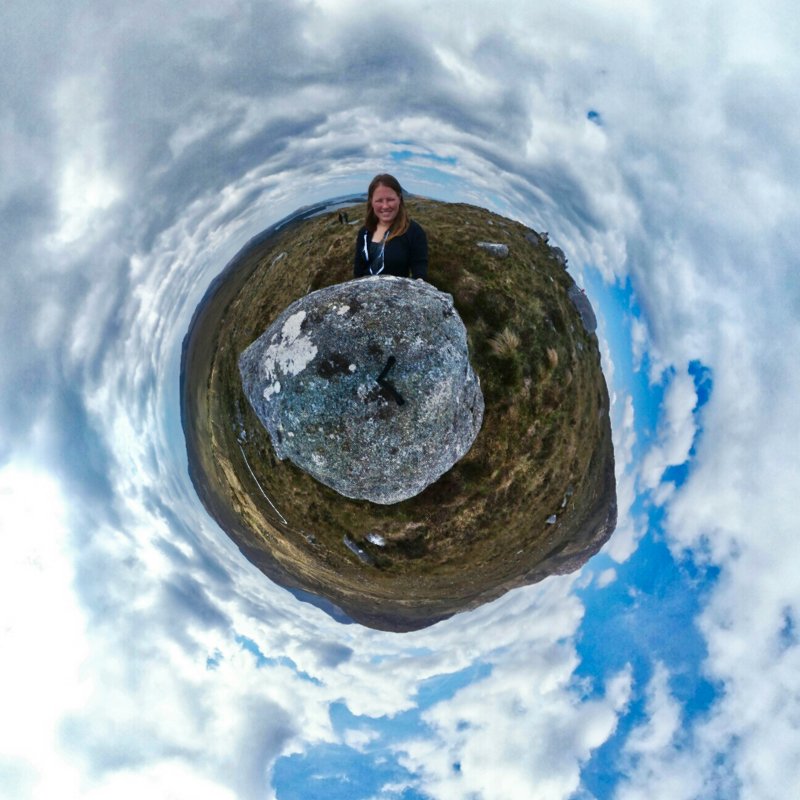
The highlight of our trip in Connemara was going to be the Connemara National Park with a hike on Diamond Hill. It was cloudy and questionable if you would be able to enjoy the amazing view from the Diamond Hill summit. And I decided not to do the full hike, but enjoy a slower pace and spend more time trying out my new camera. I had a brand new 360 camera and this almost excited me more than the whole mountain ;)
At a crossing where the hiking fanatics continued, there was a massive rock that I turned into my special place. I got my mini tripod and camera, hid behind the stone and created many tiny planes with and without me in it.
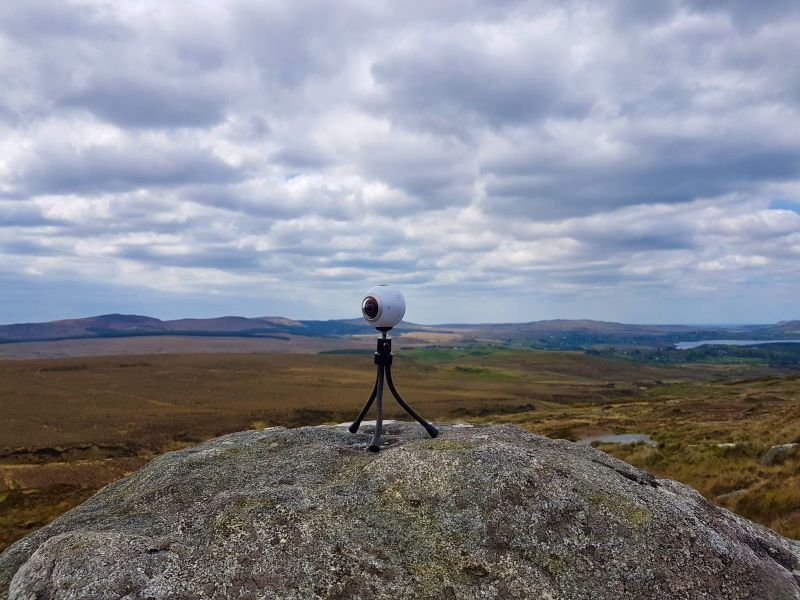
See? Obsessed with my camera
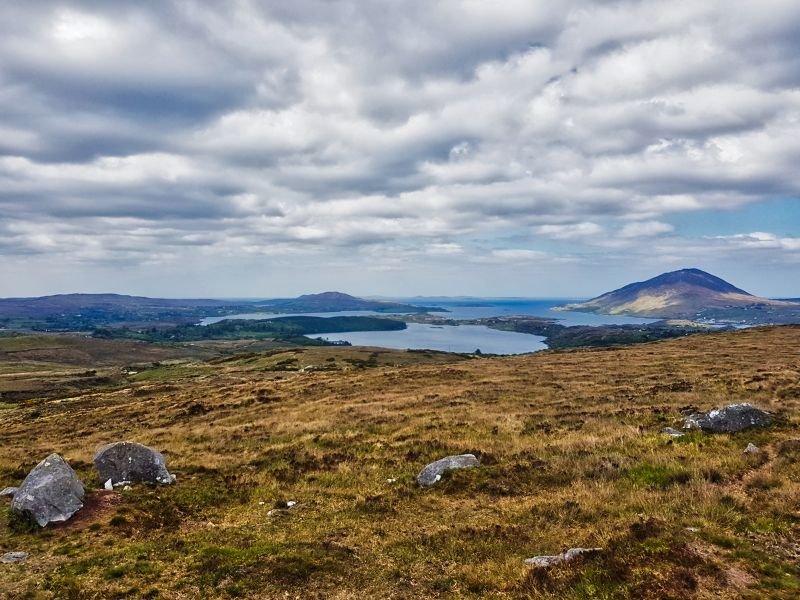
View of the Letterfrack bay from the slope of Diamond Hill
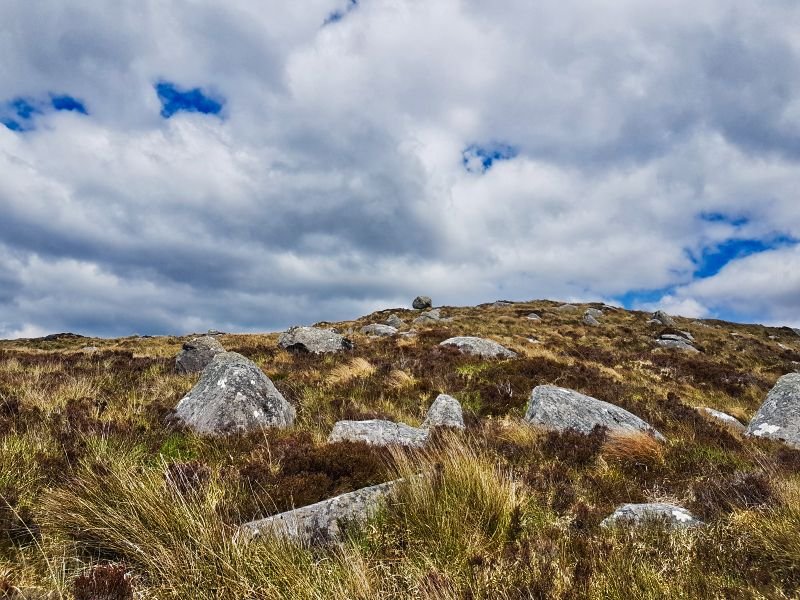
I wonder where these rocks came from
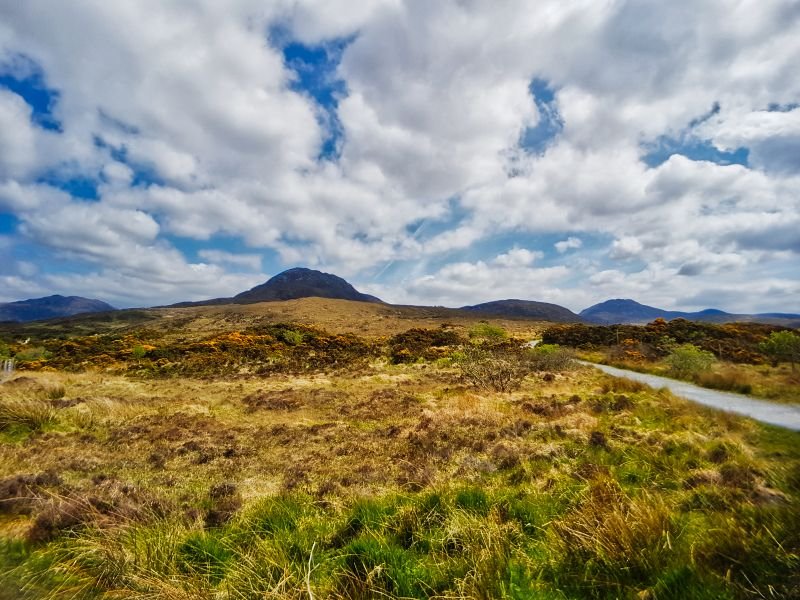
Path away from Diamond Hill
We made a quick stop at Kylemore Abbey, that was being renovated. So yes, you will need your fantasy to see how impressive it really is.
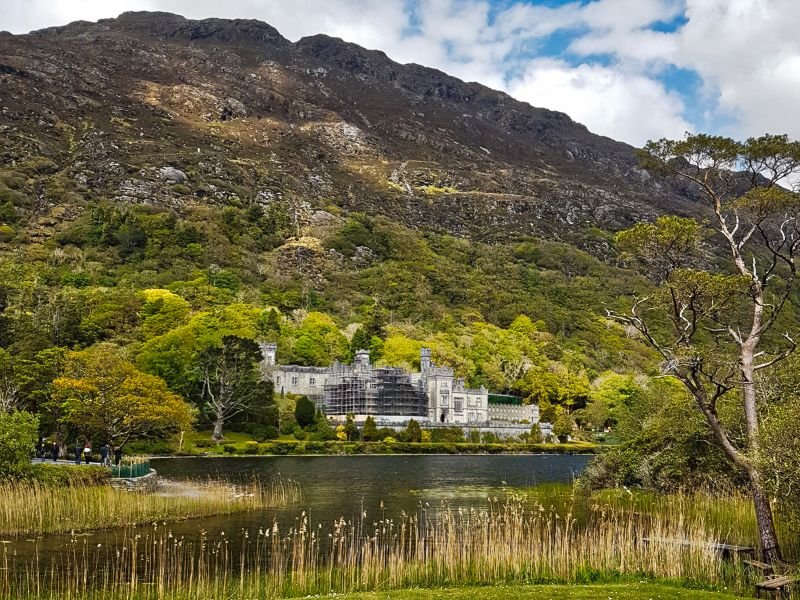
Quick stop at Kylemore Abbey
The rest of the trip became a bit of a blur. I kept falling asleep and there weren't many stops. We passed a few lakes, showing off what Connemara has to offer. But all I could think of was how different this looked from the time a few months earlier when I was here.
Because there is a difference, like night and day, of Connemara in rain or when it is dry. And coming back to the point I made at the beginning of this post. I really love Connemara in the rain! It then shows something I have never seen anywhere else in the world. Because the ground has so many rocks and there are hardly any trees in this area, you will see a huge amount of small silvery streams of water running off the hills as soon as it starts raining. It was impossible to capture from the driving bus, but I hope you believe me. The water finds his own way down and you will find many small waterfalls everywhere.
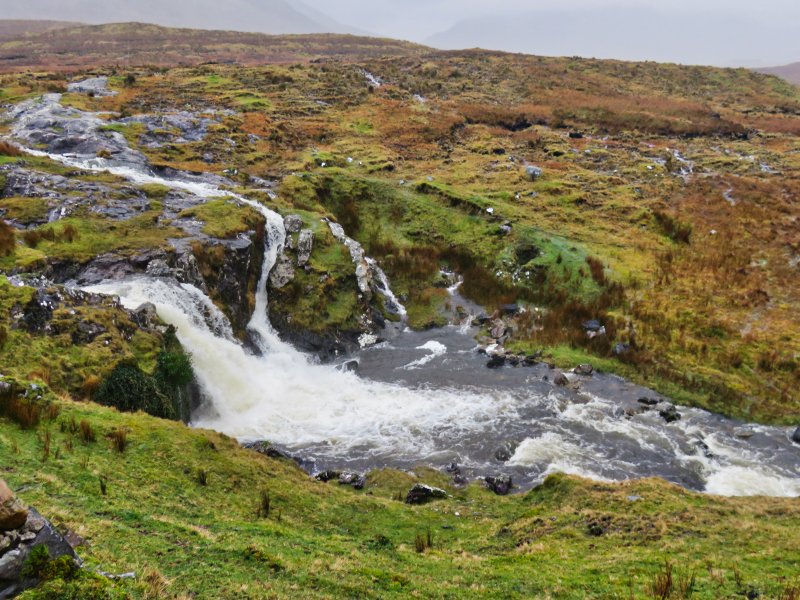
What a bit of rain does to Connemara
So different when it is dry and almost sunny! It is almost boring this way ;)
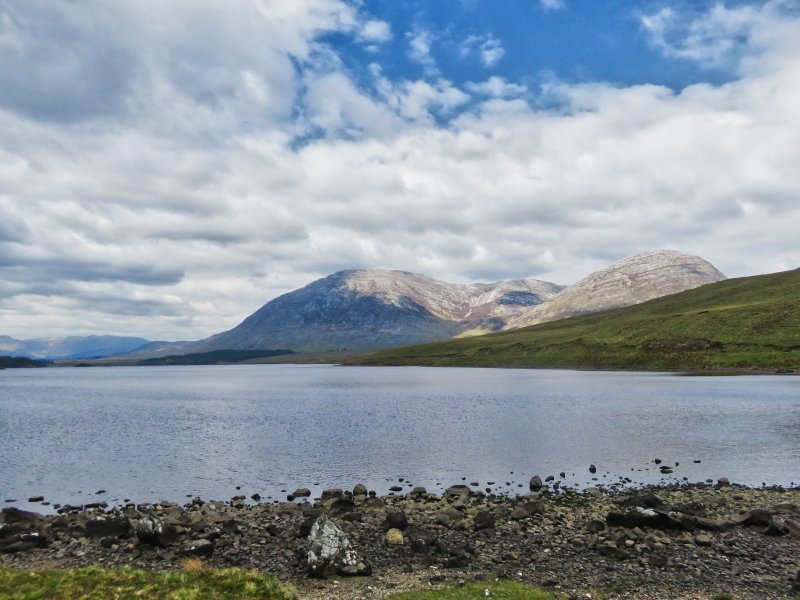
Lough Inagh

Lough Inagh
After Lough Inagh went straight to Galway, without stopping. I guess everyone on the bus was too tired to care about extra stops. In Galway, I immediately went back to my hotel to get a powernap before dinner. The fresh air of Connemara does that to you!

Also in this series:
- Ireland & the back arse of nowhere #1: Aran Islands
- Ireland & the back arse of nowhere #2: Cliffs of Moher
- Ireland & the back arse of nowhere #3: Gap of Dunloe & Lakes of Killarney
- Ireland & the back arse of nowhere #4: County Donegal
- Ireland & the back arse of nowhere #5: Dingle Peninsula
- Ireland & the back arse of nowhere #6: Howth Cliff Walk
Europe series:
- Somewhere in Europe #1: San Pedro del Pinatar, Spain
- Somewhere in Europe #2: Bilbao, Spain
- Somewhere in Europe #3: Algarve, Portugal
My California series:
- Exploring the Golden State #1: Northern Highway One, Avenue of the Giants, The Lost Coast, Eureka!
- Exploring the Golden State #2: Marin County

